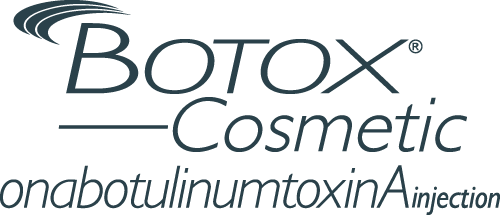When it comes to Botox and fillers, the real question isn’t just when to start, but why. Aging doesn’t follow a calendar—it’s shaped by genetics, lifestyle, and even regional factors like Florida’s year-round sun exposure. The decision between prevention and correction is less about chasing a number and more about understanding how subtle changes in your skin reflect your unique aging journey. Recognizing this early can shift the conversation from fear of wrinkles to proactive, empowered skin health.
Understanding Prevention vs. Correction in Aesthetics
Prevention and correction are often spoken about as opposites, but in reality, they exist on a spectrum. Prevention means using treatments like Botox or subtle fillers to relax overactive muscles and maintain youthful volume before lines or sagging become permanent. Correction, on the other hand, steps in once visible wrinkles or deeper folds have already developed. What’s rarely discussed is how prevention can influence correction later—patients who start earlier often need fewer units, less filler, and experience more natural-looking results. In this way, prevention isn’t just about stopping aging—it’s about reshaping how the skin ages over time, creating a softer transition into correction when it becomes necessary.
The Science of Aging: Why Timing Matters
Aging isn’t just about wrinkles—it’s a complex process involving changes in muscles, fat pads, collagen, and even bone structure. Dynamic wrinkles, caused by repeated expressions, eventually etch into the skin and become static wrinkles that remain even at rest. Fillers step in when natural fat pads shrink and the skin loses elasticity, often beginning in the late 20s to early 30s. What’s often overlooked is that these shifts happen at different rates for each person. Someone with thin skin or high sun exposure may notice lines years earlier than someone with thicker skin or strong collagen reserves. Timing treatments around these biological milestones, rather than birthdays, makes results far more natural and long-lasting.
Best Age to Start Botox: Key Considerations
The “best age” to start Botox is less about a single number and more about recognizing subtle changes in the skin and how your face moves over time. Different decades bring different needs, and understanding these stages helps patients choose treatment for prevention or correction in a thoughtful way:
- Botox in Your 20s – Baby Botox & Prevention
Small doses, often called “baby Botox,” can be used in the 20s to soften strong expression lines before they leave permanent marks. This approach isn’t about freezing expression—it’s about slowing the deepening of forehead lines or crow’s feet. - Botox in Your 30s – Prevention Meets Early Correction
In the 30s, early static wrinkles may begin to appear. At this stage, Botox is used both to prevent new lines and to correct faint ones. Patients who start here often find they need smaller, less frequent treatments over time. - Botox in Your 40s and Beyond – A Corrective Focus
By the 40s, wrinkles are often more established. Botox is primarily corrective here, softening etched-in lines while still preventing them from deepening further. The key difference is managing expectations—results can be significant, but they often work best alongside other treatments like fillers or skin resurfacing.
What’s seldom emphasized is that Botox isn’t simply a cosmetic “age marker.” It’s a tool that adapts to your skin’s stage of aging, helping each person address unique needs at different points in their life.
Best Age to Start Fillers: Beyond Wrinkles
Fillers are often associated with correcting deep lines, but their role in prevention and subtle enhancement is less discussed. The right timing depends not only on age but on changes in volume, facial structure, and lifestyle factors. Understanding these nuances can help patients achieve natural, long-lasting results:
- Lip Fillers – Subtle Enhancement in the 20s and 30s
Younger adults may use small amounts of filler to maintain natural lip fullness or correct minor asymmetry. This proactive approach can help preserve shape and prevent more dramatic changes later. - Cheeks and Mid-Face Volume – Early Signs of Aging
Volume loss in the cheeks often begins in the late 20s to early 30s, though it may be subtle. Early intervention can lift and support the mid-face, reducing nasolabial folds before they deepen. - Nasolabial Folds and Smile Lines – When to Begin Correction
As cheeks lose volume, smile lines can become more prominent. Strategic filler placement can restore balance and prevent the face from appearing hollow or sagging. - Timing Over Age
Rather than focusing solely on birthdays, the best age for fillers depends on visible changes, facial symmetry, and lifestyle factors like sun exposure, sleep, and stress. Patients who start fillers thoughtfully often require less product over time and enjoy a smoother, more natural transition into corrective treatments. - Preventative Fillers – A Subtle but Powerful Approach
Using small amounts early can help maintain youthful contours and support skin elasticity, effectively reshaping how the face ages and reducing the intensity of future corrections.
Prevention vs. Correction: Which Path Is Right for You?
Choosing between prevention and correction isn’t simply about age—it’s about understanding how your skin is aging and what you want to prioritize. Genetics, sun exposure, lifestyle habits, and facial anatomy all play a role in when lines and volume loss appear. Prevention, using small doses of Botox or subtle fillers early, can slow changes and reduce the need for aggressive treatments later. Correction addresses visible wrinkles or volume loss that has already occurred, often requiring more product and precise planning. Many patients benefit from a blended approach, starting with prevention in areas of early concern and introducing corrective treatments gradually, allowing for natural, long-lasting results tailored to their unique aging journey.
What to Expect as a First-Time Patient
For first-time patients, the process begins with a detailed consultation, where a dermatologist evaluates facial structure, expression patterns, and skin health—not just wrinkles. Individual goals are discussed, and treatment options are tailored to match both preventive and corrective needs. Many first-timers are surprised by how subtle initial treatments can be, with small doses creating natural results rather than dramatic changes. Expect discussions about treatment frequency, as preventative Botox may require fewer sessions than corrective treatments. Safety, technique, and realistic outcomes are emphasized, helping patients feel confident and informed. This approach ensures each treatment enhances natural features while supporting long-term skin health.
Conclusion
There isn’t a single “best age” to start Botox or fillers—what matters most is understanding your skin, your goals, and how aging is affecting your unique facial structure. Prevention and correction each play a valuable role, and thoughtful timing can make treatments more natural, effective, and long-lasting. By paying attention to subtle changes and choosing an individualized approach, you can support your skin’s health while maintaining a refreshed, youthful appearance. To explore which path is right for you, visit us at Derrow Dermatology or call 407-389-2020 to schedule a personalized consultation with our expert team.











